 This is a continuation of a discussion on connection that has formed the basis of a lecture by German rider, trainer and author, Susanne Miesner. Susanne has looked at connection in its historical context, and here she examines some of the day-to-day issues…
This is a continuation of a discussion on connection that has formed the basis of a lecture by German rider, trainer and author, Susanne Miesner. Susanne has looked at connection in its historical context, and here she examines some of the day-to-day issues…
To have a true connection is the goal every rider has every day with every horse, and if you find it for just a few minutes, then you are happy as a rider – because connection is much more than just what you have in front of you.
You are connected with your seat to the horse’s back, connected with your legs to the horse’s body, and connection can only work if it goes through the whole horse and into the rider’s body, and from the rider’s body back to the whole horse.
There is no rider in the world who can honestly tell me they have never had a problem with connection. We have all had problems. Either we weren’t operating all that well that day, or we had a difficult horse, but there’s no-one who always has a perfect connection, and that is what we are striving for.
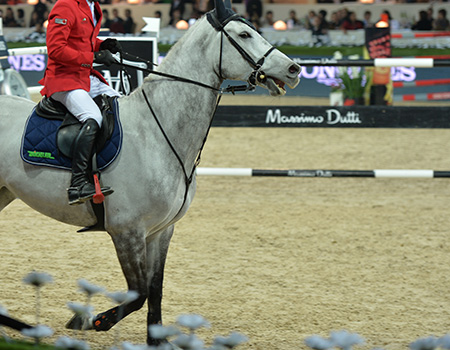
With most of us riders, you have to work for that connection every day, until finally at the end of the training session you have it. I know that at times I have ridden horses too short – every rider has made mistakes – but the question is do we do that purposely, and make that mistake into a method. Do I deliberately put my horse into an un-natural frame? Or did I get it accidentally wrong today.
What are the typical mistakes in connection?
Going behind the bit.
Going behind the vertical.
Going over the bit and rolling up the neck.
Going against the bit.
Twisting the poll.
Those are the main mistakes, but just because the horse is on the vertical it does not mean that the connection is good.
Look the photo above. If I asked you what would you give for this connection, you might have said 7 or 8 because it is on the vertical, but no, the neck is wrong. It is not stretched out of the wither, it is sucked back into the wither.
But what if you have a horse with a long neck, and the nose just a little behind the vertical? 5! This is really a phenomena of the last few years, many judges just go on whether the nose is on the vertical.
How do mistakes occur accidentally? It happens to riders every day because we always want to do things with our hands. Nothing is so well-designed as our hands, so we always try and grab things. If we are sitting on the horse, and we lose our balance – we use our hands!
The other problem is that a lot of people don’t understand the theoretical background to the concept of connection – they just think a horse’s head should be down – they haven’t really absorbed that the horse should move from behind, over the back, over the neck.
Another problem is not enough feeling. Feeling can vary even with a good rider. Some days you have great feeling, and riding is wonderful, then some days, the same feeling is not there. Then you have talented riders and not so talented riders. Tight, rigid seats create connection problems. Any kind of blocking – in your hips, in your knees, in your heels – can lead to a connection problem.
Bad hand carriage – problems in your neck, anything that is wrong in your own body will transfer to the horse, and can definitely affect the connection. It will also affect suppleness and the rhythm, but connection will inevitably suffer.
Another factor is the type of horse we have, and paradoxically we have a problem here with wonderful horses! It is really not so easy to ride those perfectly designed horses with huge natural impulsion, and with elegant necks and a light jaw and gullet. To really ride such a horse in balance requires a wonderful elastic seat on the part of the rider because these wonderful horses are by their nature, sensitive.
This is complicated because we don’t give our horses enough time any more. The young stallions have to go to the licensing and throw their legs around to impress people, or they have to go to the Bundeschampionate, and so there is a lot of stress, especially on the good horses. The tendency is there to force these good horses into a connection and they eventually fall apart. So you either choose a correction preparation, which will take a longer time – or you present them in public in a spectacular way which is not really good for the horse.
Horses were trained slower, when there was no emphasis on producing young horses for competition. And horses then, in general, were not so refined. Their bodies were stronger and broader, so a rider could not so easily destroy the natural balance.
Another potential cause of a bad connection, is the horse’s natural desire to run and go forward. Lots of times, people bring their horses straight out of the stable – and they are fresh and sensitive to the surroundings – and after riding, then they turn the horse out. I have learned over the years, that with a lot of horses, it’s better to turn them out, let them run around – then ride them, and then you find you have something to push forward. Lots of times the horse comes out of the stall, rested for many hours, and it wants to go – so what do you do? You work with your hands again!
The second last point is: patience. I think in our society, everyone lacks patience. Everyone is bragging about our wonderful German system, but if you have a good horse, and you have a good rider, you are really pushed into the circle: Bundeschampionate twice, maybe even four times, World Championship twice, Nürnberger Burgpokal, now we have a series for 7 – 9 year old horses in Grand Prix, the Louis d’Or… So especially for the good horses, there is a lot of pressure – and add to that the pressure from owners and sponsors.
The other reason is money. Money makes the world go round, the horses that trot the best, earliest, are the ones that get sold for the most money. It is this time factor that results in so many horses that look as if they have a good connection, but at a deeper level they are not really connected.
This next illustration is from Dr Gerd Heuschmann who has become famous all over the world for his work in this area. How is the young horse in the warmup able to carry the rider? It has to drop its neck and stretch out of the wither – and only if it does that, can the back muscles take on a positive tension – and that is the only way the horse can carry the rider in balance.
The tendon plates are connected with the muscles of the back end, and we know it has been scientifically proven, that only if the back is up a little bit – it doesn’t really come up, but we mean the back is carrying – then those back muscles get activated and the hind leg is able to swing forwards, and under the point of balance.
This is the way a horse should look after it has been ridden for several years, or at the end of each session.
It’s just a drawing, but if a horse is able to stretch down in the warm up, in collection he will still stretch the topline of his neck – it will stretch forward, and pull his back forward, and let the hindleg step up under.
If we go to this next example, the horse’s nose is on the vertical, but now the neck drops and the tendons and muscles are not able to connect and allow the horse to step up any longer, the hindlegs have to be out behind.
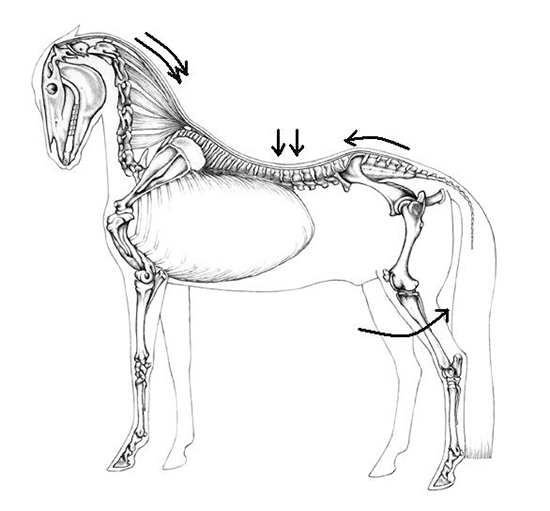 Now we have what Gerd Heuschmann calls the Spannrückengänger, where the horses get put under so much pressure, that the back does come up but it almost comes up too high. When the back comes up like this, you wonder how the vertebrae with wings on the top and bottom, don’t pinch.
Now we have what Gerd Heuschmann calls the Spannrückengänger, where the horses get put under so much pressure, that the back does come up but it almost comes up too high. When the back comes up like this, you wonder how the vertebrae with wings on the top and bottom, don’t pinch.
What happens with trainers who use extreme methods, like Baucher, and Fillis in the past, is that when you get too hard on the horse, and force it to do something – the horse will show resistance over the long run, or they will show what Andrew McLean talked about at the Global Dressage Forum – learned helplessness. They just give up and do the job – with no happiness or expression.
This is only a photo, one short moment, but look at what the hindlegs do! If this horse tried to bring his hind legs under him, then his back would break!!
You could look at this horse and say, ‘he’s really active behind’ but then you look at his tail. Secondly, looking more closely, you don’t see the lowering of the joints. The croup actually comes higher and you wonder how the horse is able to do this – you have to wonder if he is able to do it with normal training methods.
Here you see the same thing, the horse is trying to put his hindlegs under, but he really can’t. The hindleg is not even under the hip.
Next we see more flexion to the side. If you looked into the horse’s eyes, he is probably saying ‘I don’t want to fall down, I don’t want to fall down!’ What it is doing with its right shoulder is very unnatural, he’s just looking for balance, I think it is a pitiful picture.
Here again, we see this lateral flexion, see what happens to the croup balance?
We have the same thing in other sports – Western, Jumping, Dressage, Driving. Humans always try to influence the horse’s neck – because it is the only part of the body that you can easily change.
Here’s some pictures of a young horse, a four-year-old stallion, successfully competing at the Bundeschampionships. Being ridden according to German system and allowed to develop his potential. Trot and canter pics, also conformation and walking out in hand, so you can see him. He’s now competing at Grand Prix level in the US and we have a pic of him competing at the Rio Games, before he was sold to the US. Compare…
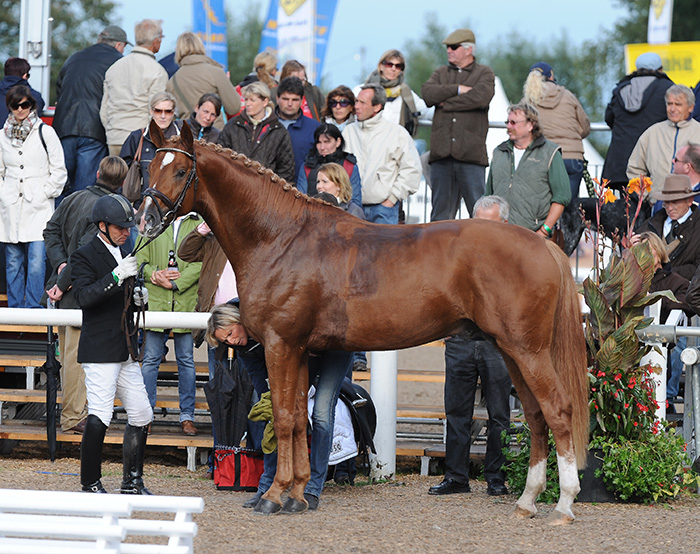
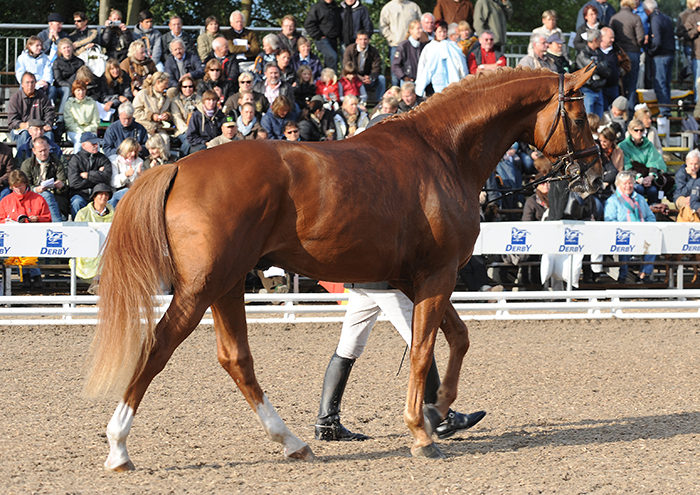

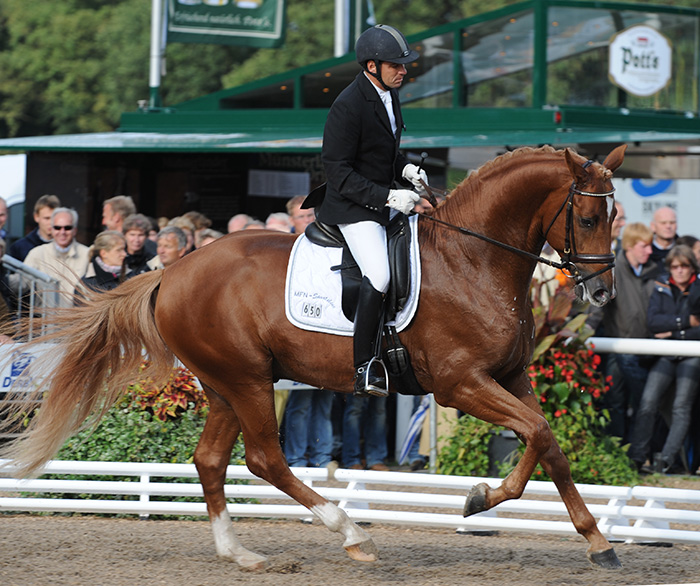
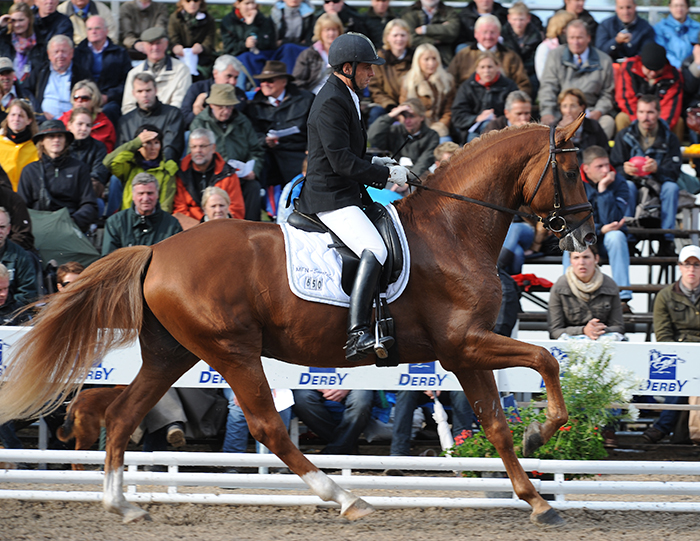
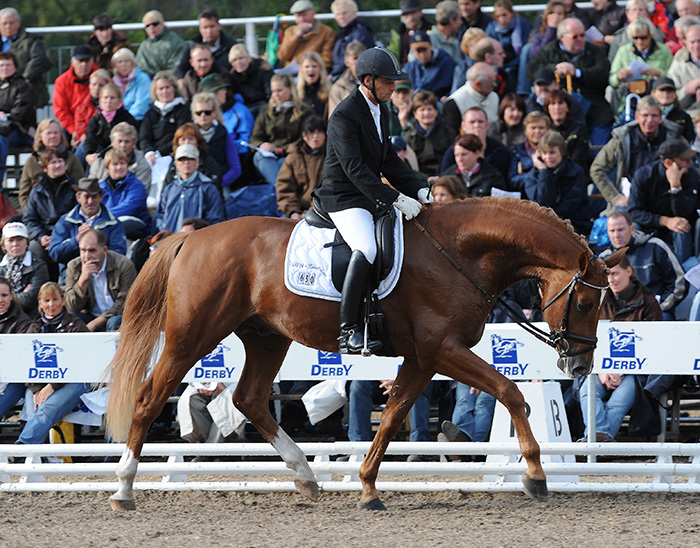
and eight years later…
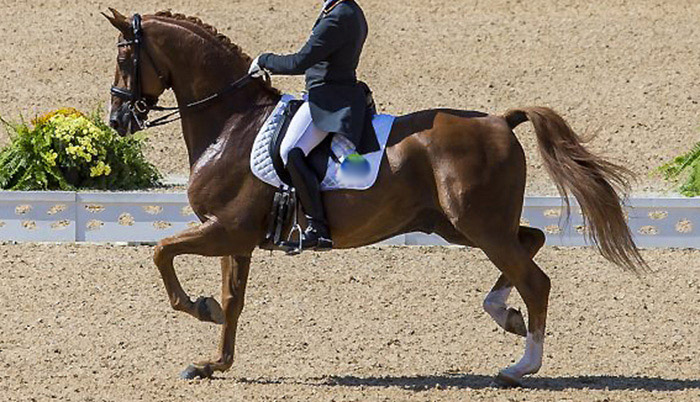
This is the same horse competing at Grand Prix level many years after he competed at the Bundeschampionate As Susanne reminds us, “Humans always try to influence the horse’s neck – because it is the only part of the body that you can easily change”.
More exciting new stallions available to Australian breeders for the 2024 season:
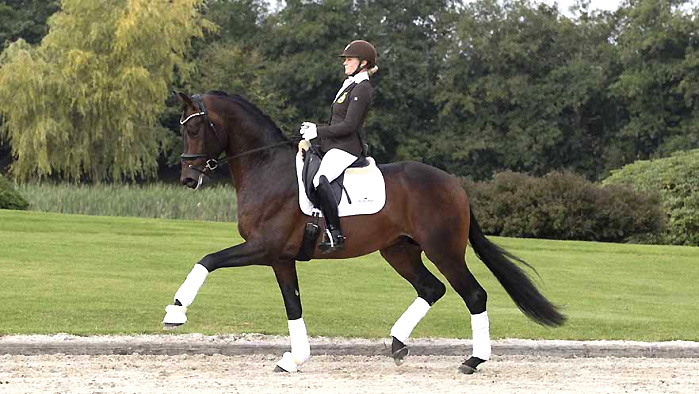
Dynamic Dream
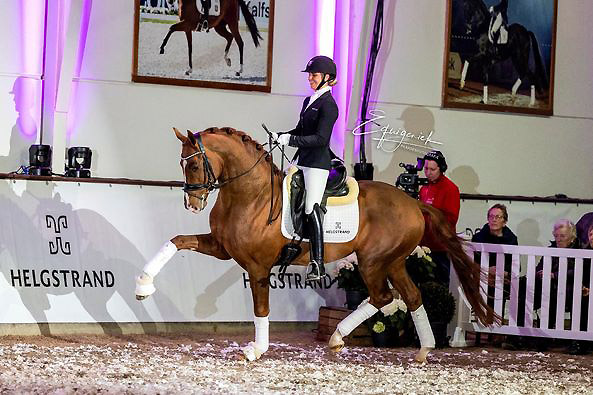
Fifty Fifty
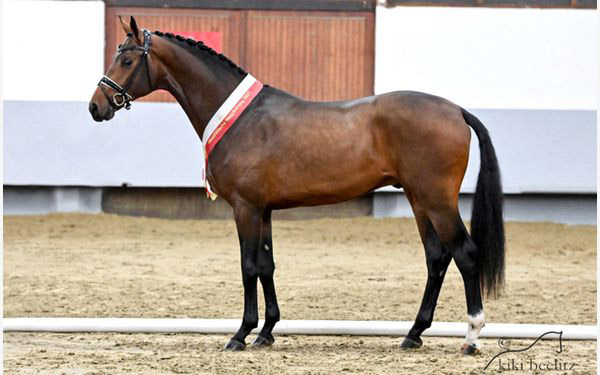
Escamito



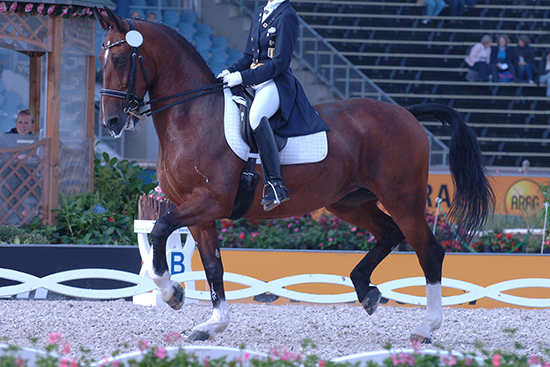
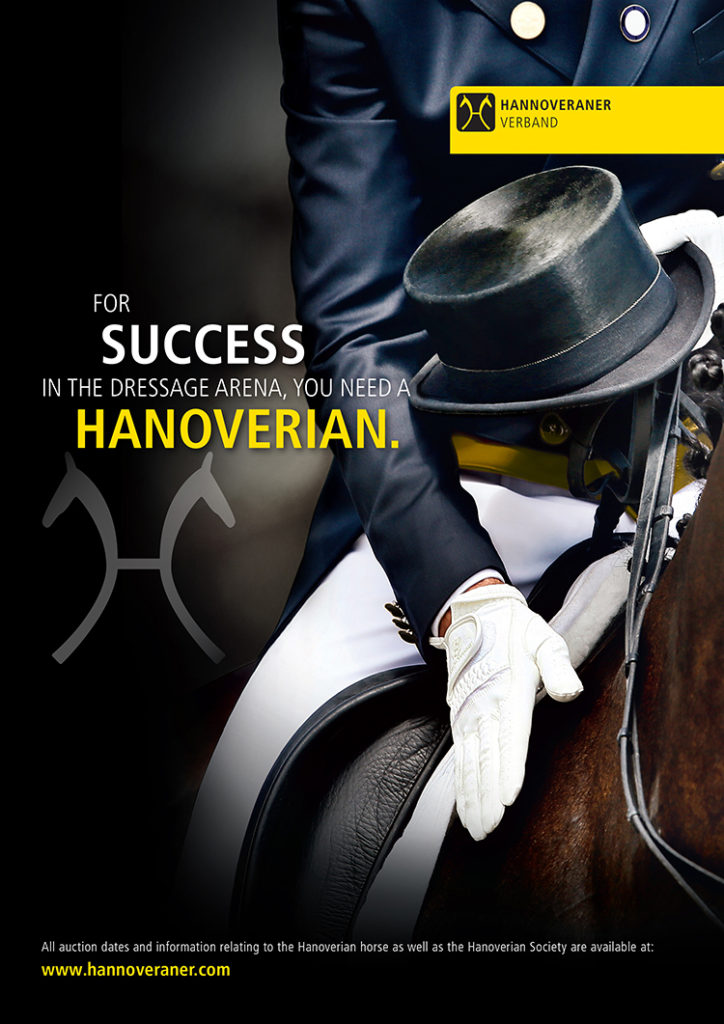
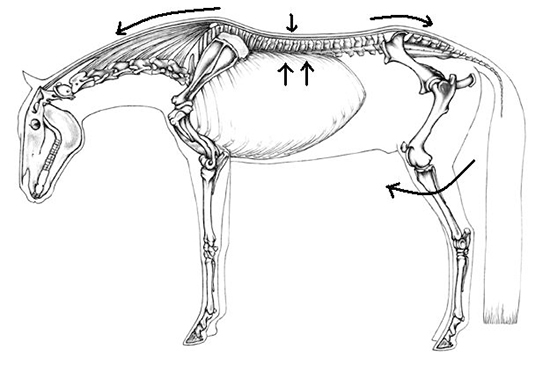
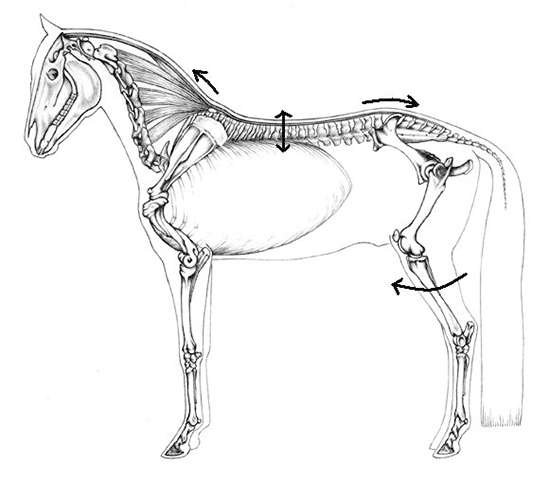
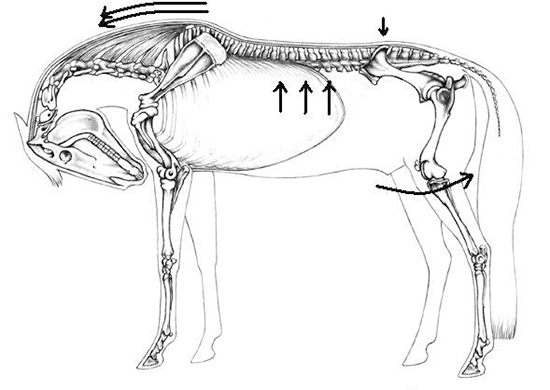

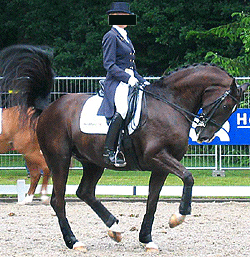
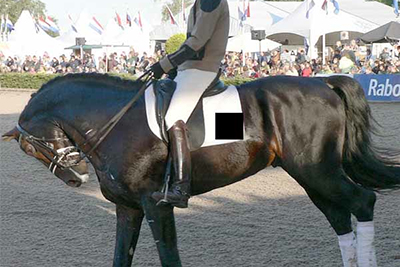
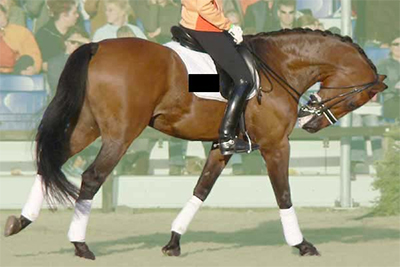
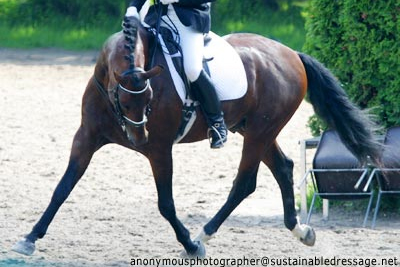
How could I get permission to have this article reprinted in a Magazine in New Zealand please?
Thankyou
Katherin Gorringe
email me – info@horsemagazine.com, chris hector
He is a nicely made horse with basically good gaits. However, I think the hind leg muscling especially the middle gluteal, the biceps femoris, and semitendinosus are not as well developed as the shoulder and neck muscles. In the trot he has too much weight on the front leg (compare pasterns) and his hind legs are not well engaged. In the canter photos he is slightly on his forehand and the front diagonal looks like it will land slightly before the hind. He has great separation between his hind legs. He moves best in long and low. I think he needs much more time and good riding to develop behind, before he will be ready for extreme collection. Dressage horses who show in GP before 10yrs old or show a lot at 10 are risking long term soundness.
Cheers Dan Marks
Can I please have permission to share this with my dressage club? (Yarra Valley DC)